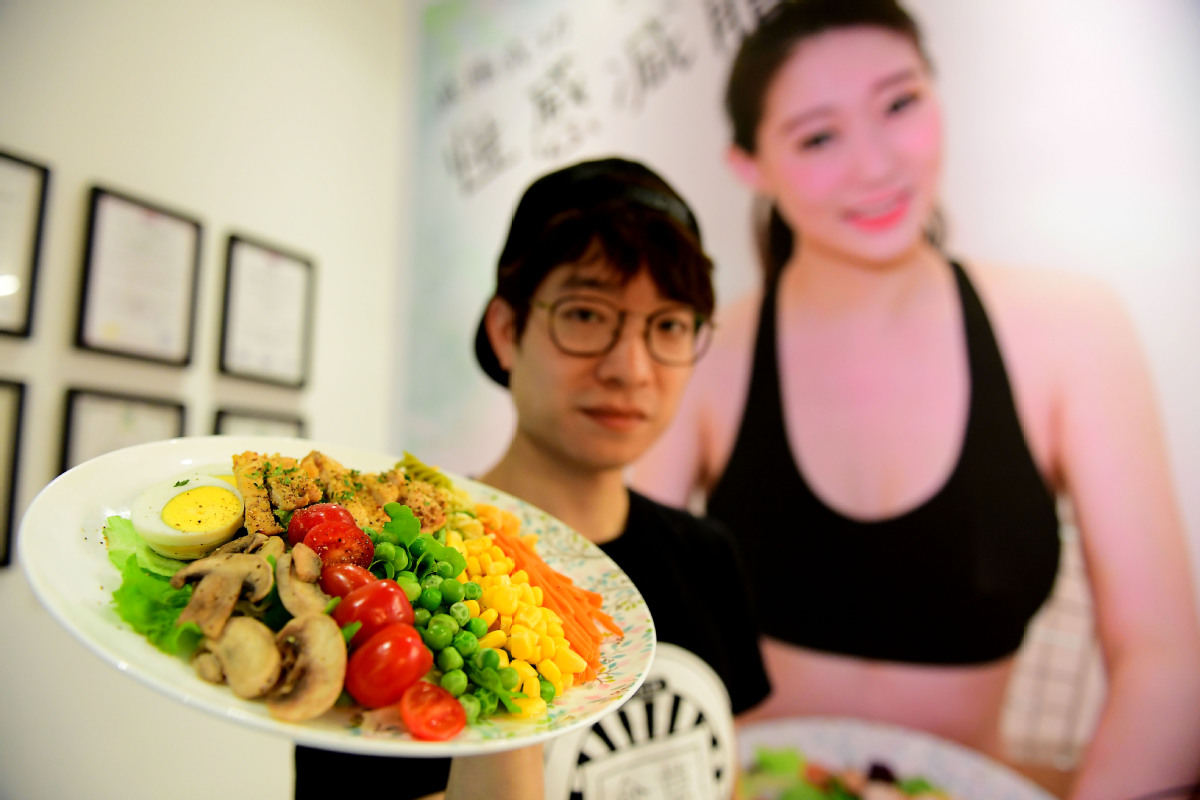
From the People's Daily App.
This is Story in the Story.
According to a recent data market research report, China's overall consumer food service sector netted $700 billion in sales revenue last year, the highest worldwide, followed by the US, Japan and India.
By 2023, the value of the consumer food service sector in China is foreseen to hit $812 billion, up 12 percent over the expected value for 2019.
Light meals with low calories, low fat and high fiber have become popular in China as consumers are becoming more health conscious.
The number of light meals ordered using online food delivery platform Meituan Dianping exceeded 26 million in 2018, up almost 160 percent year-on-year. Meanwhile, consumption increased 160 percent during the same period.
More online takeaway food stores have been established to meet the robust demand for healthy and high-quality food, with the number of "light meal sellers" increasing 120 percent from 2017.
Cities with the majority of light meal orders include Shanghai, South China's Guangzhou and Shenzhen, Beijing, East China's Hangzhou and Nanjing, Central China's Wuhan, Southwest China's Chengdu and Chongqing and South China's Foshan.
Today’s Story in the Story looks at the growing popularity of light meals as Chinese consumers are becoming more conscious about their health and diets.

A woman has a light meal at a restaurant in Shenyang, capital of Liaoning province. (Photo: China Daily)
Led by females, Chinese diners are increasingly preferring healthier, low-fat light meals at restaurants and on online delivery platforms.
Tian Shen, 27, a bank employee and a fitness lover in Beijing, said when she eats together with a friend, she likes to choose light-meal dining places like Nordic-style coffee and sandwich restaurant Wagas, and Western-style healthy food restaurant chain Moka Brothers. The latter offers low-calorie, low-fat food, which rules out weight gain on consumption.
"Sometimes, I order only salads that contain tomatoes, lettuce and avocados. Occasionally, I may order other food like sandwiches and pastas. I'd feel sated and comfortable with just the salad. I like low-calorie sauces like vinaigrette and honey-mustard dressings with salad," Tian said.
The light meal is a healthy lifestyle choice for the public, forming a stable consumption market in not only long-established first-tier cities but also in fourth and fifth-tier cities.
As light meal consumption becomes a new part of Chinese lifestyle, consumers should pay attention to maintaining balanced nutrition while controlling weight at the same time. Food producers should also establish a traceable system for food to guarantee food safety, as most light meal dishes are half-cooked, industrial experts said.
Young and busy urbanites in China like eating low-fat salads and sandwiches in a casual environment that cozy light-meal restaurants provide, according to Meituan Dianping.
Last year, online orders for light meals rose 75 percent year-on-year. Light-meal restaurants surged to more than 3,500 from 600 in 2017. Female diners accounted for 70 percent of light-meal buyers.

A server displays a plate of salads at a light-meal restaurant in Shenyang, capital of Liaoning province. (Photo: China Daily)
Chinese people's preference for oily, salty and spicy food has significantly dropped. Their tendency to eat sweet and fresh food that is also healthy and of high quality has increased. Providing fresh materials and healthy nutrients has gradually become a new theme of the suppliers of the catering sector.
Founded in 1999, Wagas is a cafe that offers wide light-meal selections like sandwiches, pasta, salad, juice and coffee. Now, it has more than 75 stores in 10 major cities nationwide.
Similar to Wagas in concept, Woods Cafe opened its fifth branch in Beijing last month. The restaurant tries to make its healthier offerings tastier and appealing by tweaking its recipes.
Established in 2002, Element Fresh is a 30-outlet restaurant chain that provides fresh and healthy low-fat food. It said it will continue to open new restaurants to cater to growing appetite for healthier food in Chinese cities.
A Meituan Dianping survey found that just having one popular dish can drive rapid customer growth and lead to the success of a restaurant. Besides, simpler menus would be easier for restaurants to standardize the taste of various dishes and dominate the market.
Between big restaurants and niche or exclusive restaurants, 60 percent of Chinese consumers would choose the latter. And nearly 95 percent of the respondents who were surveyed said they would go to a restaurant just because of one special dish.
Most of such restaurants are known to prepare their low-fat, low-sugar and high-fiber foods by boiling or steaming, and then using cold dressings with sauce. Such foods are usually associated with bodybuilding, special diets, and clean eating.
(Produced by Nancy Yan Xu, Lance Crayon, Brian Lowe, and Paris Yelu Xu. Music by: bensound.com. Text from China Daily.)


